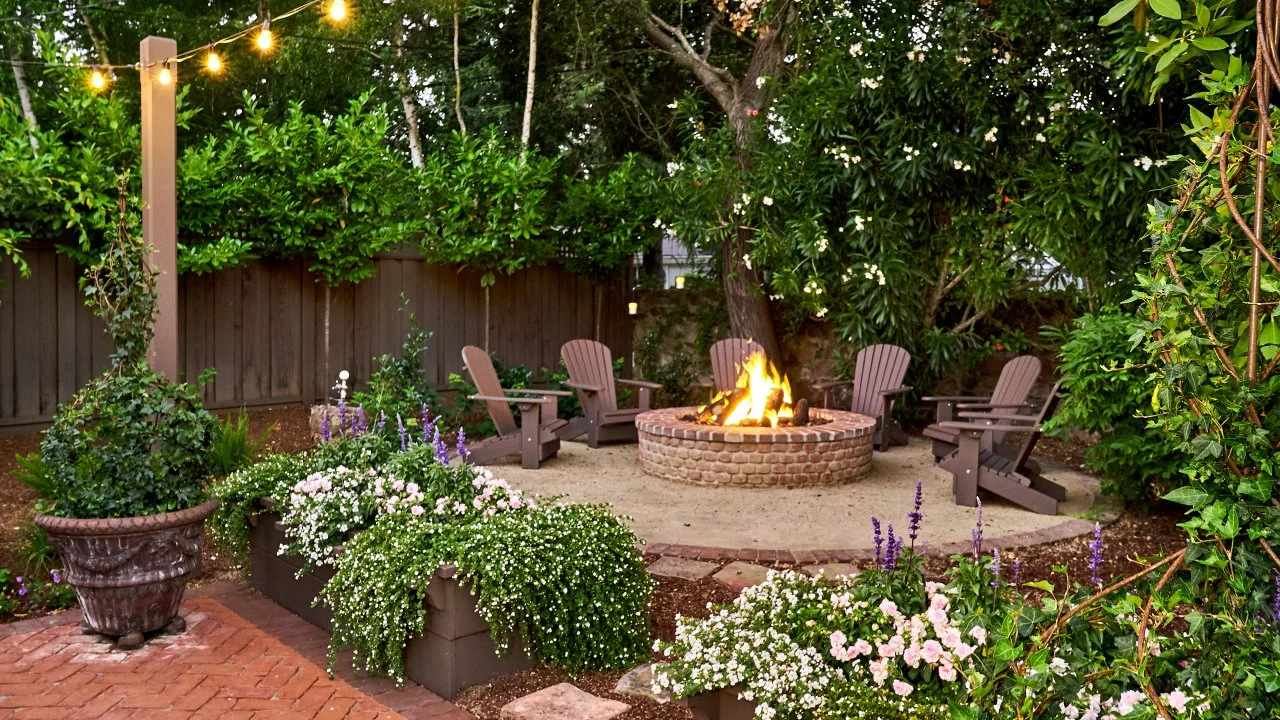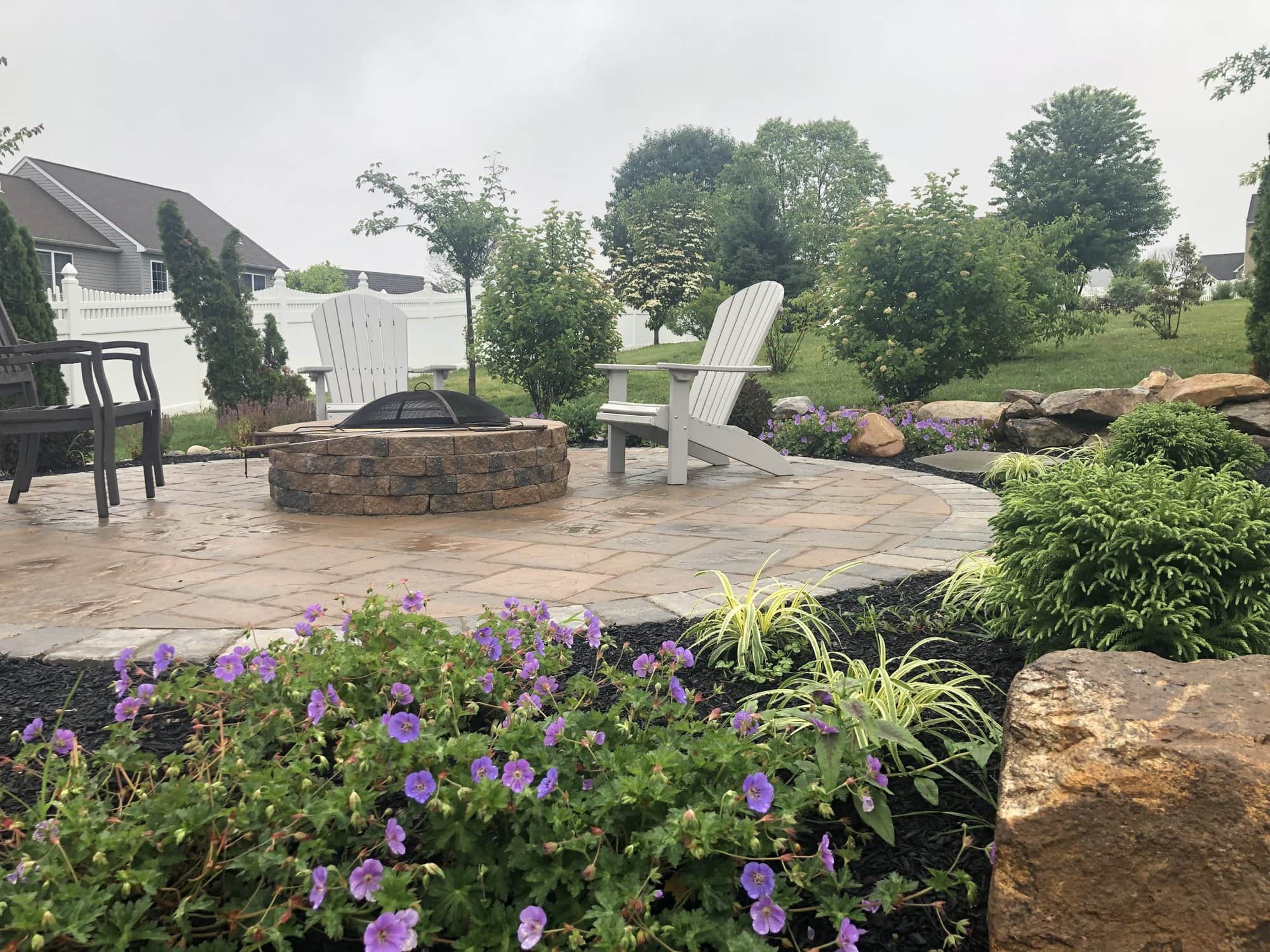Transform Your Space With Professional Outdoor Landscape Design Solutions: From Patios to Outdoor Kitchens
Changing exterior rooms calls for proficiency and mindful preparation. Professional landscaping services can boost a residential property's performance and appearances. From creating inviting patio areas to crafting fully furnished outside kitchens, these specialists bring important knowledge. They ponder local environments and sustainable techniques, ensuring each task straightens with the house owner's vision. What are the key components to consider when launching such an improvement? The responses might stun you.
The Advantages of Expert Exterior Landscaping

Creating Your Perfect Patio Area
When intending the excellent patio area, home owners must mirror on both capability and looks to produce a space that enhances their way of living. A well-designed patio works as an expansion of the home, supplying an excellent location for relaxation, home entertainment, or dining outdoors. Key variables to consider include the shapes and size of the patio, which need to harmonize with the bordering landscape and home architecture.Material option is likewise essential; choices such as all-natural stone, pavers, or timber can improve the overall appearance while offering resilience. Homeowners must think concerning furnishings arrangement, making certain sufficient room for motion and convenience. Integrating elements like shade frameworks, fire pits, or planters can include personality and utility.Lighting plays a significant duty in outdoor patio design, boosting atmosphere and functionality during evenings. Eventually, a thoughtfully created patio can raise outside living experiences and raise building value.
Producing an Outdoor Kitchen
Producing an outdoor kitchen area boosts the functionality and pleasure of any kind of outside room. Trick functions, such as grills, counter tops, and storage, play a crucial duty in the style and format of this culinary place. By taking into consideration necessary components, homeowners can craft an area that seamlessly mixes with their landscape while fulfilling their cooking demands.
Important Cooking Area Features
An outdoor kitchen can change a yard into a culinary haven, boosting both performance and social interaction. Necessary cooking area functions include a robust grill, which functions as the centerpiece for outdoor food preparation, permitting numerous cooking designs. Counter room is crucial, supplying adequate space for food preparation and serving. A sink is also essential, enabling very easy cleanup and helping with cooking tasks. In addition, including a fridge assurances components and beverages remain fresh and accessible. Storage space solutions, such as cupboards or shelves, assistance preserve organization and efficiency. Finally, incorporating weather-resistant materials ensures long life and sturdiness, making the outside kitchen area a reliable room year-round. With each other, these attributes develop a welcoming ambience for family members gatherings and enjoyable visitors.
Design and Design Tips
While developing an outdoor cooking area, careful idea of the layout can considerably enhance both performance and looks. Custom Patios. An effective design starts with zoning, dividing the area right into cooking, eating, and preparation locations. Positioning the grill near the food prep area streamlines the cooking procedure, while assuring adequate counter room for meal assembly is essential. Integrating an eating location that permits easy movement motivates social communication. Additionally, integrating storage services such as closets and cabinets maintains the space organized. It is essential to review the circulation of foot website traffic, preventing congestion by maintaining clear paths. Lastly, utilizing sturdy products that withstand outdoor problems guarantees durability, while thoughtful lights can create an inviting atmosphere for evening celebrations

Enhancing Visual Charm With Landscape Design
Enhancing curb appeal with landscape design involves a careful balance of style components that attract attention and create a welcoming environment. Strategic plant placement can highlight architectural features, while thoughtful hardscaping includes framework and effect. Together, these components change the outside of a residential or commercial property, making a long lasting impression on site visitors and passersby.
Layout Components That Astound
Engaging design elements play a necessary role in click here improving a residential property's aesthetic allure, as they develop a welcoming impression for visitors and passersby alike. Thoughtfully designed features, such as decorative paths, sophisticated fence, and dynamic flower beds, add to a natural visual. Special focal factors, like an elegant water function or a striking sculpture, can draw attention and stimulate interest. Additionally, well-placed exterior lights not just illuminates pathways however also highlights architectural information during the night. Integrating multi-level landscapes with differing textures and shades includes depth and dimension, developing a dynamic aesthetic experience. Ultimately, these captivating style components work sympathetically to boost the overall appeal of a property, making it stand out in your area.
Strategic Plant Placement
Strategic plant placement greatly affects a residential property's curb charm, enhancing the fascinating style components already in position. By thoughtfully picking and placing plants, home owners can develop a harmonious blend of shade, appearance, and elevation that draws the eye. As an example, putting taller plants towards the back and much shorter ones in front develops deepness. Furthermore, utilizing indigenous plants can improve the landscape's sustainability while offering seasonal interest. Vivid flowers can be deliberately positioned near paths or entryways to welcome visitors, while evergreen shrubs offer year-round framework. Incorporating seasonal blossoms assurances recurring aesthetic charm. In general, well-planned plant setups not just boost appearances yet additionally add to an inviting ambience that shows the house owner's design and enhances the overall building worth.
Hardscaping for Influence
While plants play an important duty in landscape design, hardscaping aspects can significantly elevate a residential property's visual appeal by giving framework and visual passion. Functions such as stone paths, brick patio areas, and ornamental walls develop a solid foundation that matches greenery. These components not just define rooms yet also guide visitors with the landscape, boosting the general experience. In addition, incorporating outdoor lighting right into hardscaping can emphasize architectural details and develop a cozy, inviting atmosphere throughout the evening. Fire pits and outdoor kitchens include capability, making exterior areas more comfortable and attractive. By blending hardscaping with soft landscaping, property owners can accomplish a harmonious equilibrium that mesmerizes the eye and increases property value. Inevitably, thoughtful hardscaping transforms outside spaces into stunning displays.
Picking the Right Plants and Materials
When choosing plants and materials for outside landscaping, it is important to contemplate aspects such as environment, soil problems, and planned use the area. An effective landscape layout harmonizes with the native environment, making sure that picked plants flourish and add to the total visual. Local climate influences the choice of vegetation; as an example, drought-resistant ranges are more effective in deserts, while rich plant matches more warm climates.Soil top quality additionally plays a significant duty in plant health. Conducting soil examinations can help figure out pH degrees and vitamins and mineral web content, leading the option of ideal plant species. Additionally, the intended use of the area-- be it for relaxation, amusing, or horticulture-- will certainly affect choices relating to plants and products. Sturdy, weather-resistant materials are necessary for hardscaping components like patios and pathways, while picking plants that give year-round passion boosts the landscape's appeal throughout the seasons.
Sustainable Landscaping Practices
Sustainable landscaping methods concentrate on developing exterior rooms that are environmentally accountable and resource-efficient throughout their life process. These practices emphasize the usage of native plants, which require less water and upkeep, consequently promoting biodiversity and reducing dependence on chemical plant foods and chemicals. Rainfall gardens and absorptive paving are frequently applied to manage stormwater drainage, enhancing groundwater recharge and decreasing flooding risks.Additionally, sustainable landscape design includes composting and organic mulch to enrich dirt health and wellness, decreasing the demand for synthetic dirt amendments (Outdoor kitchens). Reliable irrigation systems, such as drip watering, are created to preserve water while guaranteeing plants receive ample hydration.Moreover, the use of recovered materials for hardscaping elements decreases waste and motivates a circular economy. Via these methods, sustainable landscape design not only enhances visual appeal yet likewise fosters ecological equilibrium, adding to much healthier atmospheres for both communities and wild animals

Maintenance Tips for a Long Lasting Landscape
To assure a landscape remains lively and healthy and balanced in time, normal upkeep is important. House owners should prioritize watering, ensuring plants obtain ample hydration, especially during droughts. Mulching around plants not just preserves moisture but additionally subdues weeds and regulates soil temperature. Routine trimming of hedges and trees advertises healthy growth and enhances aesthetics.Moreover, lawn care is important; cutting at the proper height and aerating soil can enhance wellness and strength. Fertilizing plants appropriately, based on soil tests, supports nutrient needs and fosters durable growth. Furthermore, parasite administration must be aggressive, using incorporated parasite monitoring approaches to minimize damage without harming useful insects.Seasonal clean-ups, including leaf removal and debris clearance, aid keep an arranged look. Lastly, routine evaluations for signs of condition or distress warranty prompt interventions, protecting the landscape's beauty and long life. Complying with these maintenance tips will certainly lead to a flourishing, long-term outside environment.

Frequently Asked Concerns
How much time Does the Landscaping Refine Commonly Take?
The landscape design process generally differs in period depending upon project extent and complexity. Smaller tasks might take a couple of days, while larger improvements can span several weeks to months, making certain meticulous interest to information and quality.
What Is the Average Expense of Outdoor Landscape Design Providers?
The average expense of outside landscape design solutions differs widely, commonly varying from $1,000 to $10,000. Factors affecting this price consist of job size, products used, and the intricacy of the layout and installation processes.
Do I Need a Permit for Outdoor Landscaping Projects?
Determining whether a permit is needed for exterior landscaping projects differs by location and task scope. Sod replacement Toronto. Home owners must consult regional policies and zoning laws to guarantee conformity prior to beginning any type of landscaping job
Can Landscape Design Providers Aid With Drain Issues?
Landscape design solutions can efficiently address water drainage problems by evaluating the website and implementing options such as proper grading, installment of drain systems, and using ideal plants to handle water drainage effectively.
What Kinds of Guarantees Are Used on Landscaping Work?
The types of warranties offered on landscaping work can vary considerably. Commonly, they include insurance coverage for plant wellness, products, and craftsmanship, commonly lasting from one to numerous years, depending upon the company's policies and guarantees.